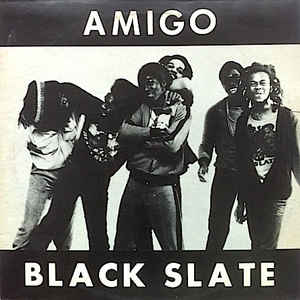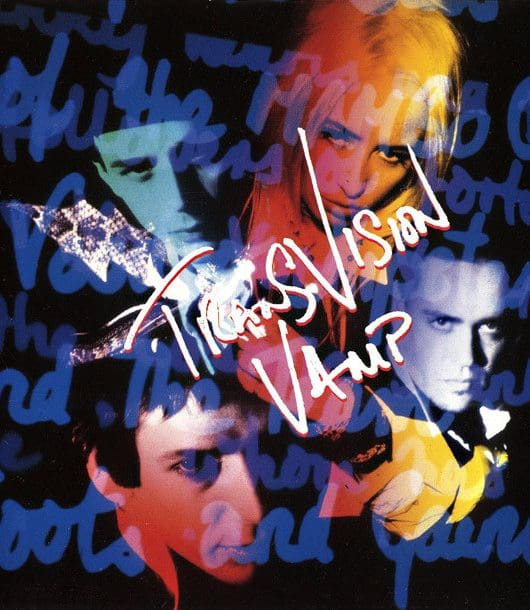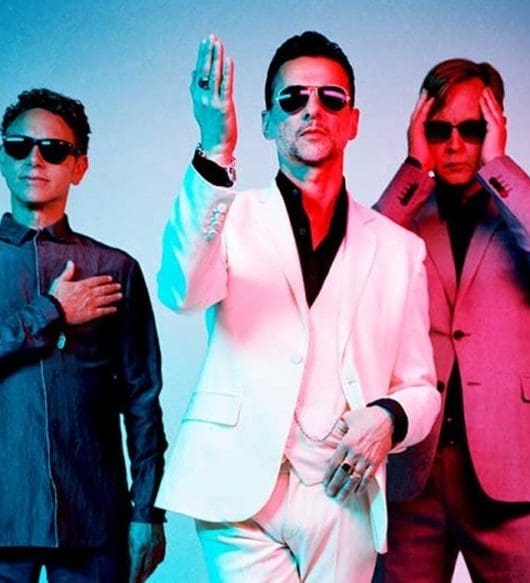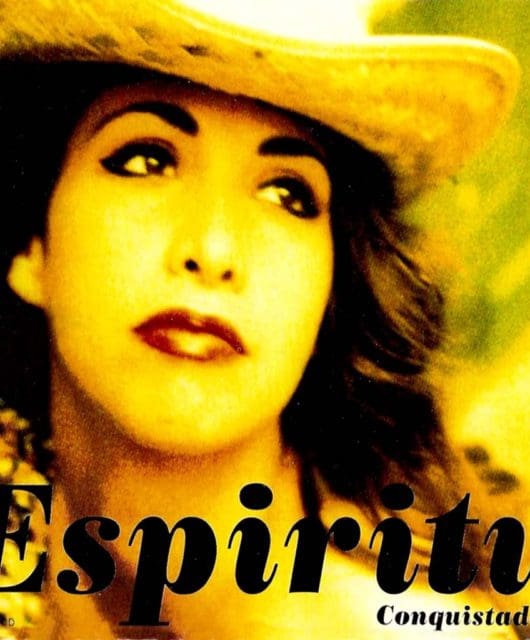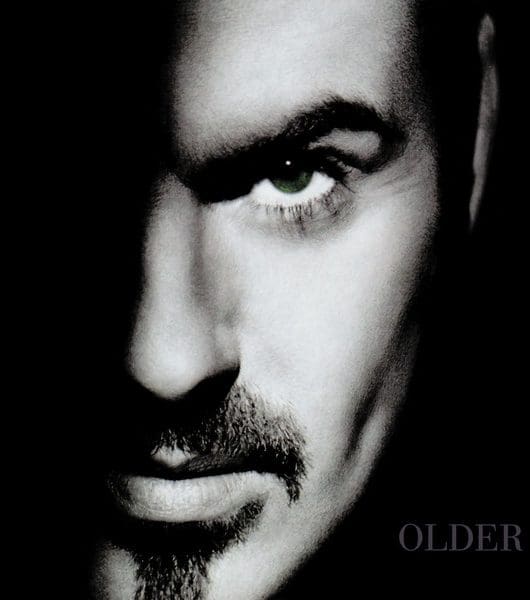INXS Interview: ‘We were all part of a brotherhood’
By Steve Harnell | January 27, 2020
They were the Aussie gang who could have ended up as petrol pump attendants. Instead, INXS conquered the world and became embroiled in a saga of drugs, ghosts, undiagnosed mental illness, supermodels and, ultimately, a tragic death. As two new films remind everyone of their legacy, the surviving band members and their manager tell Classic Pop how they became new sensations…
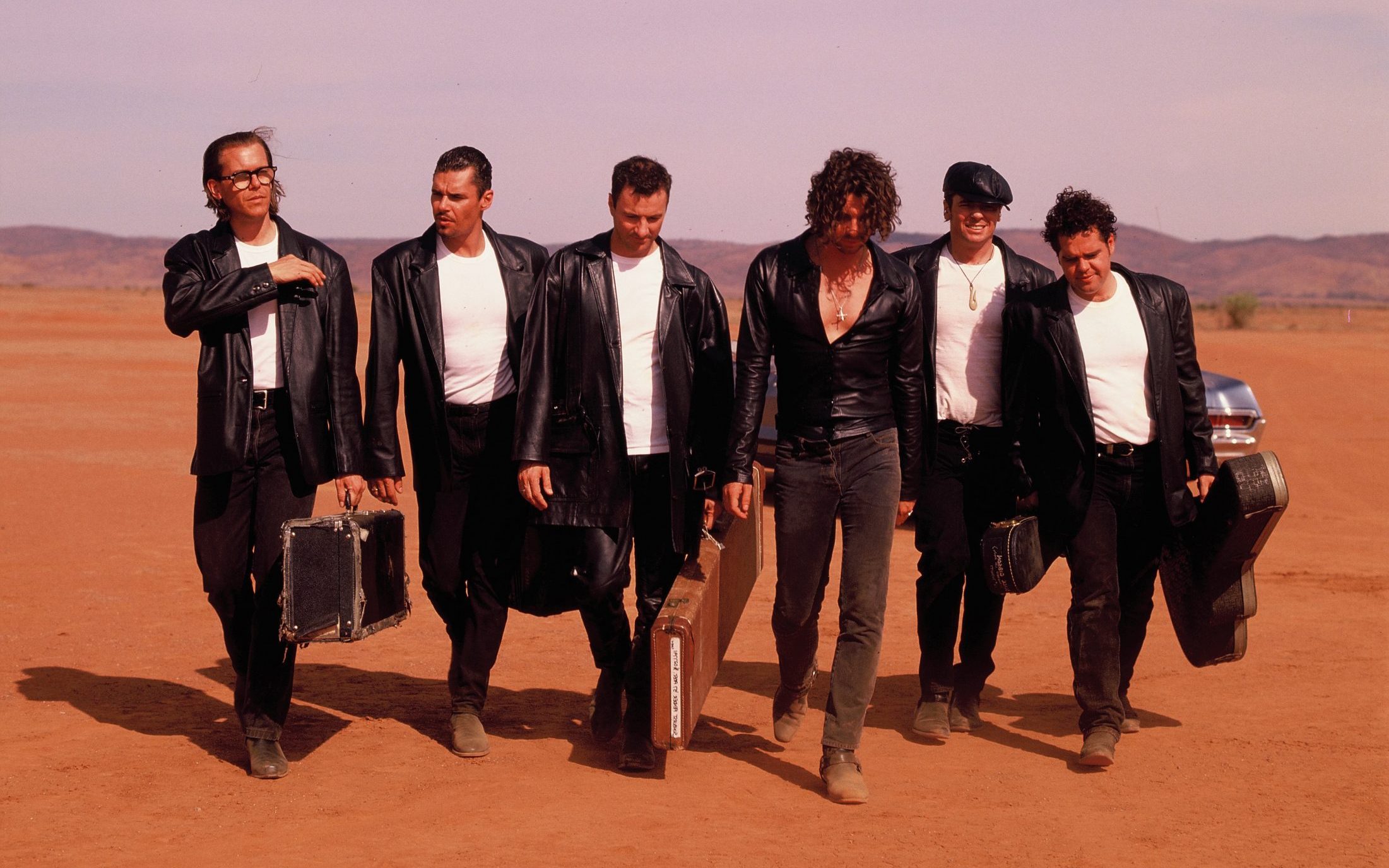
When you’ve got a frontman as powerful and charismatic as Michael Hutchence, it’s easy to romanticise your band’s history. Not INXS, who emphasise that Michael had to learn how to be a proper rock star. “Michael was a terrible singer when we started,” says bassist Garry “Gary” Beers fondly. “Michael had something, but it wasn’t a great voice. That old joke about ‘Ringo Starr wasn’t the best drummer in the world… he wasn’t even the best drummer in The Beatles’… that was Michael.”
Saxophonist Kirk Pengilly seemed the obvious choice as singer when guitarist Tim Farriss and his younger brother Andrew’s high school bands merged as The Farriss Brothers in Sydney in 1977. “At first, Kirk was the more accomplished singer,” insists Garry. “But Michael just had a spark to him from the beginning. The girls all wanted to get with him and the guys all wanted to hang out with him. All six of us were incredibly lucky to work together, because INXS is completely the sum of its parts. None of us would have made it without each other.”
Tim Farriss agrees, noting: “When we were The Farriss Brothers, Michael was this pimple-covered kid who couldn’t really sing. Then he grew up to be this amazing singer. His voice matured, so did the way he wrote lyrics. He always wanted more and was never happy with the way things were.”
What really changed things, as obvious as it sounds, was practice. INXS didn’t release their biggest album Kick until 1987, which was a full decade and six LPs after they had formed. Garry admits: “We were lucky, because you don’t get two singles before you’re dropped now”, but he points out how hard they worked to get there.
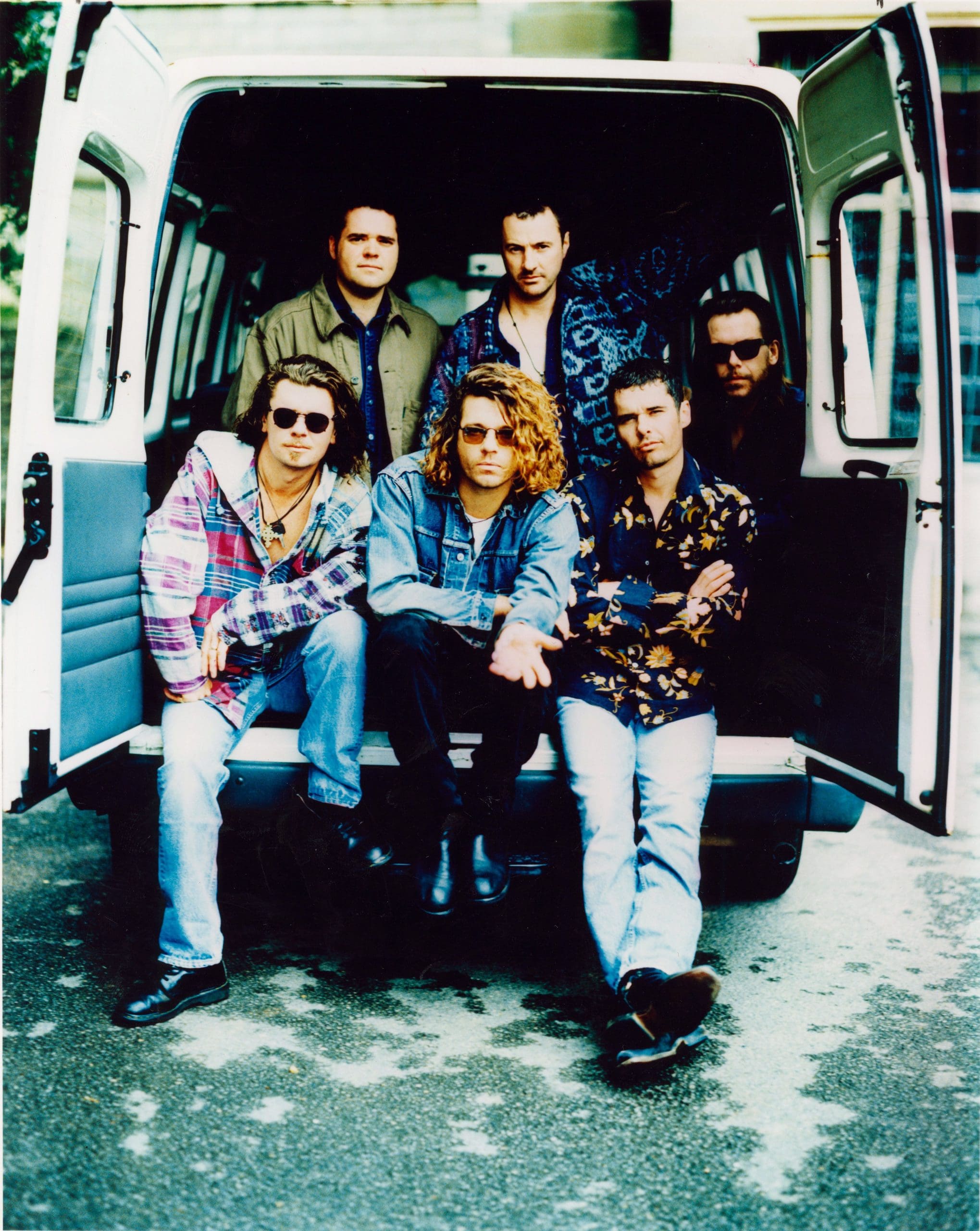 “I had a job for a couple of years pumping gas and cleaning toilets,” he says. “Some of the other guys had similar jobs, so we totally knew what we didn’t want to do. When we started, half of us were driven to succeed and half of us didn’t fully understand how much work was going to be involved.”
“I had a job for a couple of years pumping gas and cleaning toilets,” he says. “Some of the other guys had similar jobs, so we totally knew what we didn’t want to do. When we started, half of us were driven to succeed and half of us didn’t fully understand how much work was going to be involved.”
The workload was partially down to INXS manager Chris Murphy. He cheerfully confesses that he, “worked the band like dogs” after being won over by a show in 1979, shortly after The Farriss Brothers changed their name to INXS. Less a manager and more a showman in the PT Barnum, circus barker tradition, within five minutes Chris is telling Classic Pop how he and his production partner Mark Edwards are responsible for the popularisation of reggaeton in the US. He’s wildly entertaining now, so must have been bloody terrifying when he and his charges had the world to conquer 40 years ago.
“INXS started out very quirky, a ska band with a rock influence,” Chris recalls. “But they were dangerous and had a hell of an energy about them.” Almost as dangerous as the conditions the band faced, as Garry explains: “We had no money, we were starving and we were always driving around Western Australia on deadly roads,” he says. “It was tough, but the shows were fun and we knew we were good.”
Tragic Consequences
INXS were together for 20 years before Michael’s tragic death in November 1997. He died by suicide the weekend before an Australian tour was due to start, wracked by a bitter custody battle over his daughter with Paula Yates. Paula’s ex-husband, Bob Geldof, thought the couple were unfit parents after opium was discovered at their home and sought to bring Heavenly Hirani up himself. A compelling new documentary about Michael makes clear he was battling another major problem – a brain injury that he’d kept secret from everyone, including his bandmates.
In August 1992, Michael was in Copenhagen visiting his girlfriend, Helena Christensen. Drunkenly cycling to the supermodel’s home, he refused to let a taxi overtake him. The cab driver punched Michael, who hit his head on the pavement as he fell. His behaviour was never the same again, and new film Mystify – made by INXS’ regular video director Richard Lowenstein – explains the awful extent of Michael’s brain damage.
“Michael the rock star vanished in some way,” states Tim of the singer’s behaviour after Copenhagen. “He became less rock star and more celebrity – his life became more about himself than the band. We could see he’d lost the plot in some ways and were giving him space.”
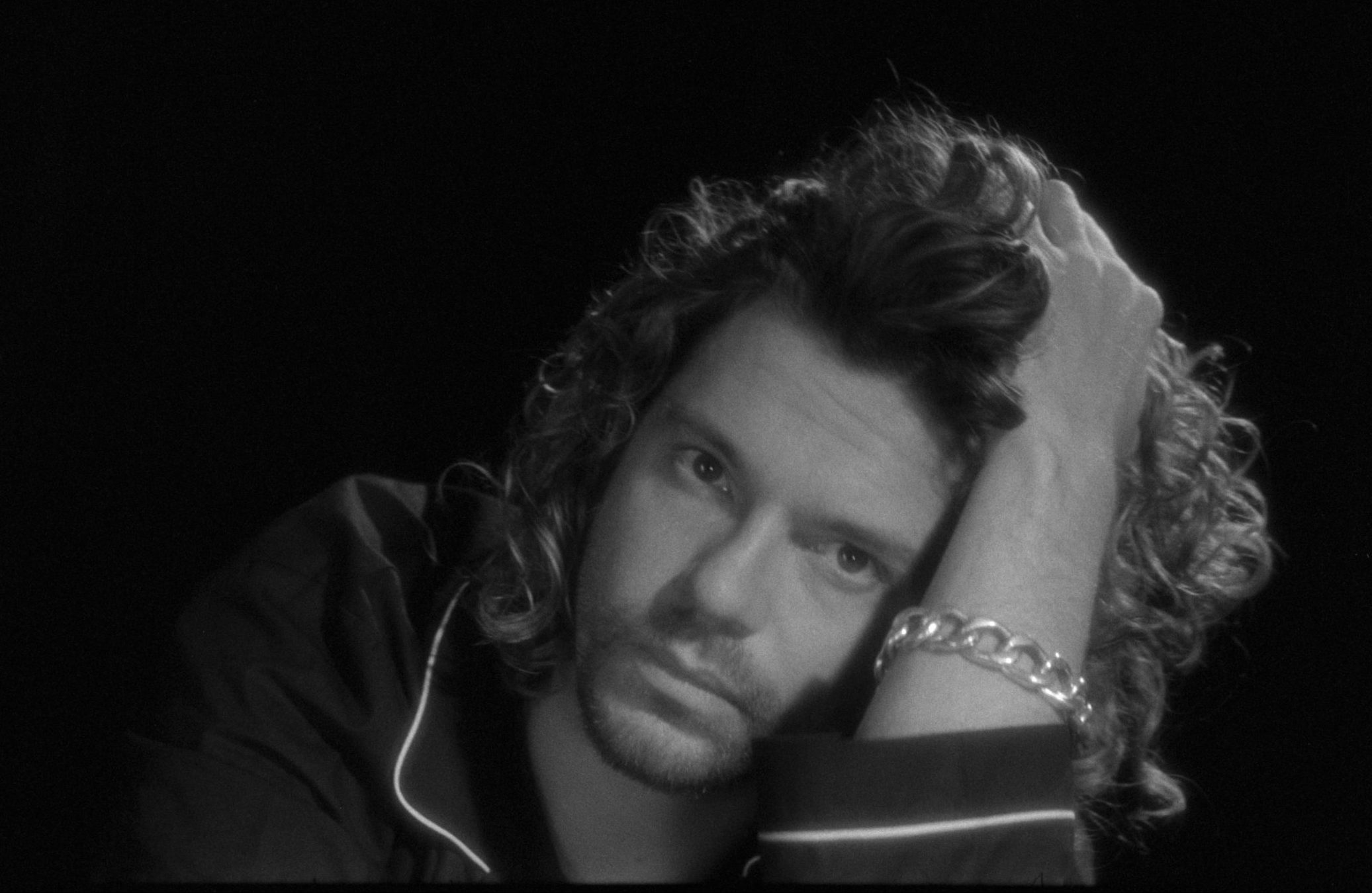 The biggest reason INXS remained so tight is their bond formed in high school. But that same bond meant they still acted, to a certain extent, like schoolboys throughout. “We were kind of blokey,” admits Tim. “Michael probably would have liked to have discussed emotional issues more. We were all pretty complex individuals, and if anyone had a problem, all they had to do was mention it. That’s the trouble with men, though: they don’t like to talk about those kind of things. We weren’t sure whether to give Michael space or offer him advice.”
The biggest reason INXS remained so tight is their bond formed in high school. But that same bond meant they still acted, to a certain extent, like schoolboys throughout. “We were kind of blokey,” admits Tim. “Michael probably would have liked to have discussed emotional issues more. We were all pretty complex individuals, and if anyone had a problem, all they had to do was mention it. That’s the trouble with men, though: they don’t like to talk about those kind of things. We weren’t sure whether to give Michael space or offer him advice.”
For Tim, his friend’s brain damage prevented him being able to get clarity. He believes: “Had Michael not had the damage to his brain, he might have been able to see his best chance of getting back to enjoying life was to embrace what he had with us as a band – and not let the rest of the world get to him so much.”
Garry is more circumspect, saying: “I don’t know what happened to Michael, and I don’t want to think about it too much. I’m sure Michael would have wanted to see his daughter grow up to be a beautiful girl. It’s been 22 years since Michael died, and I’ve got through all the emotional stuff. I’m not that emotional a guy and I’ve moved on.” But it helps comfort Garry that he still feels Michael’s presence, saying: “I still dream about Michael a lot. In those dreams, he’s still cool, happy and beautiful. Michael was a very, very close mate and we were all part of a brotherhood.”
The Early Albums
Listened to now, the INXS brotherhood’s first four albums are long overdue some reassessment. The band certainly weren’t the slick hit machine they became on Kick, but there’s an illicit, potent spirit, especially on 1982’s Shabooh Shoobah. “My favourite INXS songs aren’t the big hits, but the ones from before, when we were a bit more adventurous,” admits Garry. “Individuals got to shine more and the music was off the beaten track. There are so many hidden gems on Shabooh Shoobah.” It featured Don’t Change, which remained INXS’ staple gig closer throughout their career.
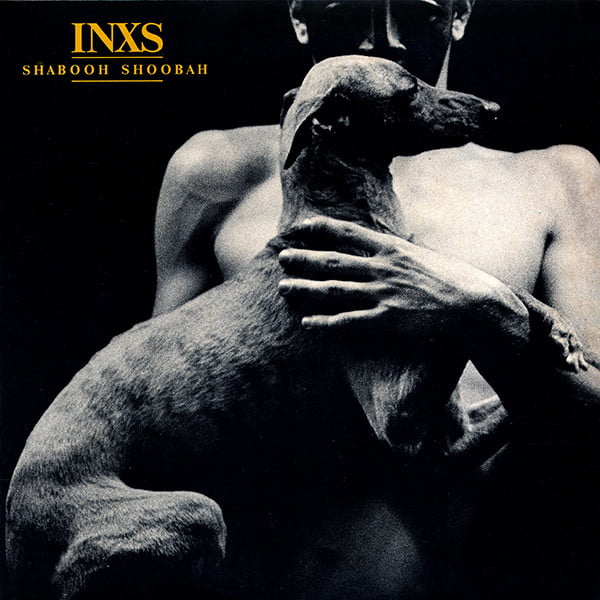 The breakthrough in the US came in 1985, when What You Need from fifth album Listen Like Thieves reached No.5. The first time INXS worked with Chris Thomas, the veteran Roxy Music and Sex Pistols producer, it marked the start of a fascinating love/hate relationship with INXS manager Chris Murphy. “The record company were never allowed in the studio when INXS were making albums,” recalls Murphy. “That wasn’t going to happen, because I refused to have ‘dead ears’ in the studio. They had free rein and, when they were nearly finished, they’d say, ‘Come and have a listen.’ That’s when I’d listen, and I’d say, ‘Right, that’s the first single, that’s the second single and the third single is that.’ Chris Thomas hated me for doing that.”
The breakthrough in the US came in 1985, when What You Need from fifth album Listen Like Thieves reached No.5. The first time INXS worked with Chris Thomas, the veteran Roxy Music and Sex Pistols producer, it marked the start of a fascinating love/hate relationship with INXS manager Chris Murphy. “The record company were never allowed in the studio when INXS were making albums,” recalls Murphy. “That wasn’t going to happen, because I refused to have ‘dead ears’ in the studio. They had free rein and, when they were nearly finished, they’d say, ‘Come and have a listen.’ That’s when I’d listen, and I’d say, ‘Right, that’s the first single, that’s the second single and the third single is that.’ Chris Thomas hated me for doing that.”
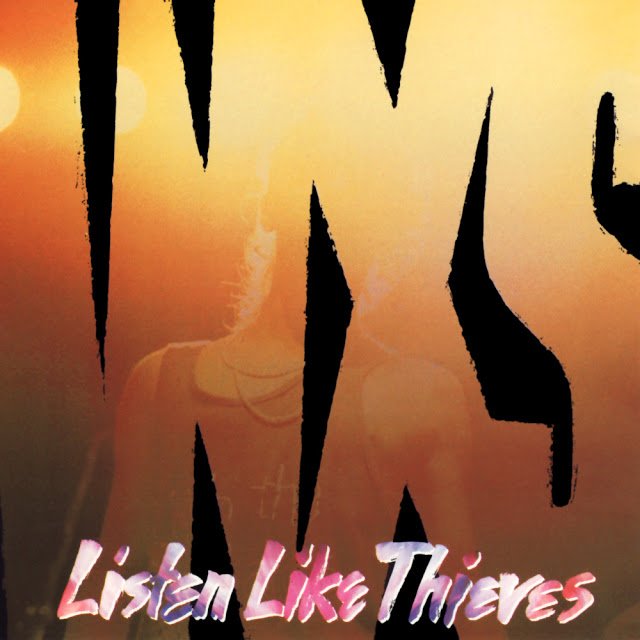 The year before, fourth album The Swing’s lead single Original Sin had been produced by Nile Rodgers and featured Daryl Hall on backing vocals, but it only reached No.58 in the US, teaching INXS’ manager a lot about US radio: “On Listen Like Thieves, we needed a rock track to relaunch us. After Original Sin, American radio was apprehensive about what we were: Rock? Pop? Disco? I told Chris Thomas all this but, when I went to grab a coffee at the studio, he came running up the hallway, yelling at me: ‘Are you crazy?’ I said: ‘I might be crazy, but I know the American market and I know what this band needs.’ Chris was still yelling at me – ‘You’re a shit! You should be shot!’ – so I said: ‘Chris, you’re doing a great job. You do your job, let me do mine.’ That worked, but exactly the same happened with Kick.”
The year before, fourth album The Swing’s lead single Original Sin had been produced by Nile Rodgers and featured Daryl Hall on backing vocals, but it only reached No.58 in the US, teaching INXS’ manager a lot about US radio: “On Listen Like Thieves, we needed a rock track to relaunch us. After Original Sin, American radio was apprehensive about what we were: Rock? Pop? Disco? I told Chris Thomas all this but, when I went to grab a coffee at the studio, he came running up the hallway, yelling at me: ‘Are you crazy?’ I said: ‘I might be crazy, but I know the American market and I know what this band needs.’ Chris was still yelling at me – ‘You’re a shit! You should be shot!’ – so I said: ‘Chris, you’re doing a great job. You do your job, let me do mine.’ That worked, but exactly the same happened with Kick.”
A Brilliant Mess
Kick – featuring Never Tear Us Apart, New Sensation and US chart-topper Need You Tonight – sold 20 million copies. It’s been largely forgotten that INXS’ label Atlantic initially refused to release it in the US. They hated its funk influence so much that Chris Murphy was offered $1million for the band to re-record it. Rejecting the offer, the manager instead approached Atlantic’s radio promo team behind the board’s back. Speaking about Kick now, Chris admits he was initially almost as baffled as Atlantic.
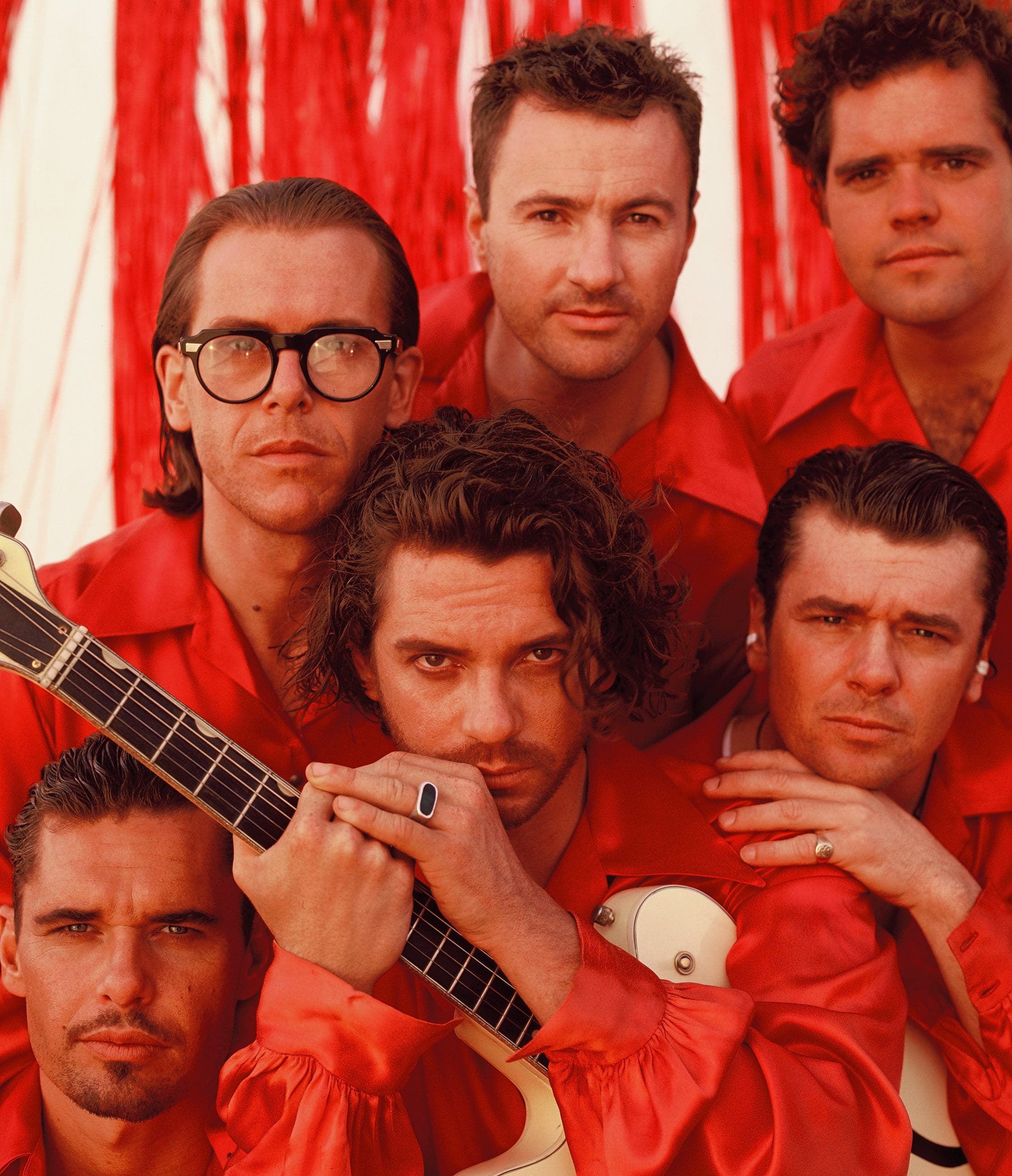 “Kick sounds like four different bands playing,” he laughs. “There were big ballads, riffy rock, funk… Kick is brilliant, but it’s all over the place and I thought, ‘How am I going to pull this together into any kind of campaign?’” The solution came from Garry, when he casually mentioned Mediate and Need You Tonight had the same bassline running through them. Chris Murphy’s solution was to launch the album – already unpopular at the record label – with all five minutes 37 seconds of Need You Tonight and Mediate merged together.
“Kick sounds like four different bands playing,” he laughs. “There were big ballads, riffy rock, funk… Kick is brilliant, but it’s all over the place and I thought, ‘How am I going to pull this together into any kind of campaign?’” The solution came from Garry, when he casually mentioned Mediate and Need You Tonight had the same bassline running through them. Chris Murphy’s solution was to launch the album – already unpopular at the record label – with all five minutes 37 seconds of Need You Tonight and Mediate merged together.
“Chris Thomas looked at me like I was on heroin,” Chris recalls gleefully. “He was jumping out of his chair, screaming, ‘You’re just fucking insane!’ I told him, ‘Maybe I am, but remember how we launched Listen Like Thieves…?’ Trust me!”
Need You Tonight began to take off and the rest was history. Well, apart from Atlantic refusing to promote Kick after grudgingly releasing it at all. “Radio helped, but it took a lot to make Kick happen,” remembers Garry. “We had to finance publicising it ourselves, which meant touring until we couldn’t stand up any longer. And Europe’s taste is well behind everyone else’s. Even though Need You Tonight had been No.1 in America, we had to release a remix before it finally charted in Europe.” Success was certainly overdue, as Tim explains: “We knocked on the door by touring relentlessly. That was the mentality of the era, and it’s how we became famous. We were a great live band, who didn’t need props, pyrotechnics, bells or whistles.”
 The Road To Wembley
The Road To Wembley
Making Kick the success INXS had long deserved burnt everyone out. “We toured Kick for 18 months and, after that long, you’re well into thinking about your next record,” Garry explains. “But Kick was still on everyone’s minds, so we couldn’t make another record yet. We needed a break, because we all wanted to keep moving on. We were never the type of people to rest on our laurels.”
Michael launched dance duo Max Q with composer Ollie Olsen; Garry played with Aussie supergroup Absent Friends; Tim and Kirk produced Sydney band Crash Politics and drummer Jon Farriss produced veteran singer-songwriter Richard Clapton.
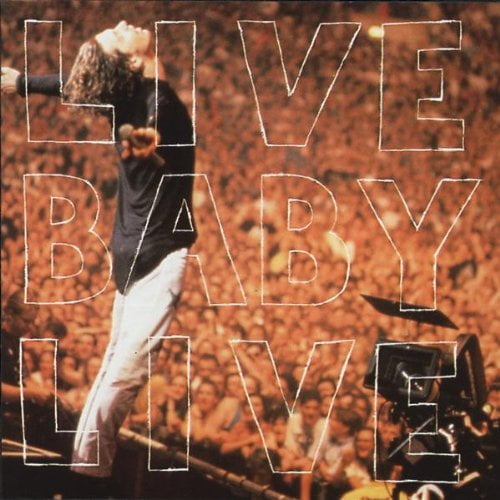 When X was finally released in 1990, three years after Kick, the juggernaut continued. Suicide Blonde and Disappear were huge singles. Touring was far more minimal than on Kick, largely limited to stadium shows, although it did lead to the definitive INXS concert when, on 13 July 1991, INXS played Wembley Stadium to 72,000 fans. If Mystify shows the complexities of INXS’ lead singer, newly re-released concert film Live Baby Live is a celebration of a band at their peak, able to treat Wembley, in Michael’s words, as “The biggest pub we’ve ever played.” Tim recalls: “That was quite literally our mindset: all we had was a few lights and a PA.”
When X was finally released in 1990, three years after Kick, the juggernaut continued. Suicide Blonde and Disappear were huge singles. Touring was far more minimal than on Kick, largely limited to stadium shows, although it did lead to the definitive INXS concert when, on 13 July 1991, INXS played Wembley Stadium to 72,000 fans. If Mystify shows the complexities of INXS’ lead singer, newly re-released concert film Live Baby Live is a celebration of a band at their peak, able to treat Wembley, in Michael’s words, as “The biggest pub we’ve ever played.” Tim recalls: “That was quite literally our mindset: all we had was a few lights and a PA.”
INXS had previously played Wembley Stadium in 1986, supporting Queen. “Queen’s was a very partisan crowd and we had things thrown at us,” laughs Tim. “To go back a few years later to our audience and see them react the way they did was like ‘Fuck yeah!’” Garry adds: “The band were on fire and Michael was above and beyond anyone else in the world at that time. We knew where we’d come from, so to get to those heights only made it more fun. Everything we did was a bit of a laugh, even Wembley. The first song was kind of a mistake – Jon started the drum groove of Guns In The Sky and the crowd went so nuts that we thought, ‘Well, I guess we’d best get on stage.’ We started Wembley Stadium with a jam, which was so enjoyable.” Tim concludes: “It felt like a club gig, just with 77,000 people there.”
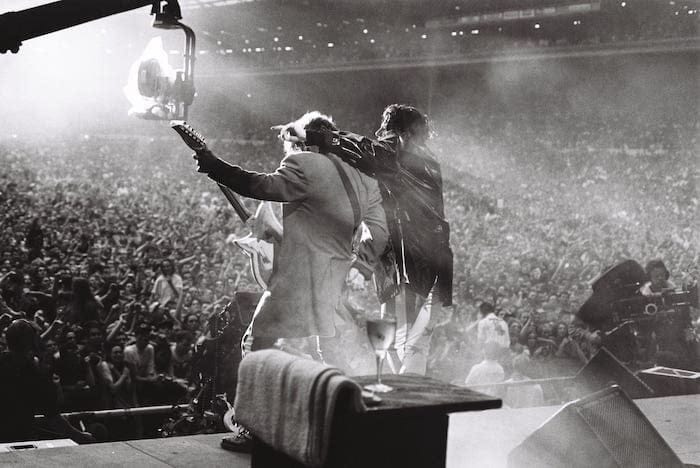 Gig Of A Lifetime
Gig Of A Lifetime
Despite the intimacy, Wembley was very much a showbiz affair. “The guestlist was something like 2,000 people,” laughs Tim. “We’d have been happy to have 2,000 paying people there! We’ve played to some amazing people – you think, ‘Shit… Mick Jagger is out there!’ Queen used to watch us. You draw on those things to sharpen your senses, though; it gives you that twinge of endorphins and adrenaline.”
There were just two problems with that show. Firstly, it over-ran, so the band didn’t get to do their second encore of Listen Like Thieves and Don’t Change. More practically, INXS spent so much on filming Live Baby Live that they didn’t actually make any money headlining Wembley Stadium.
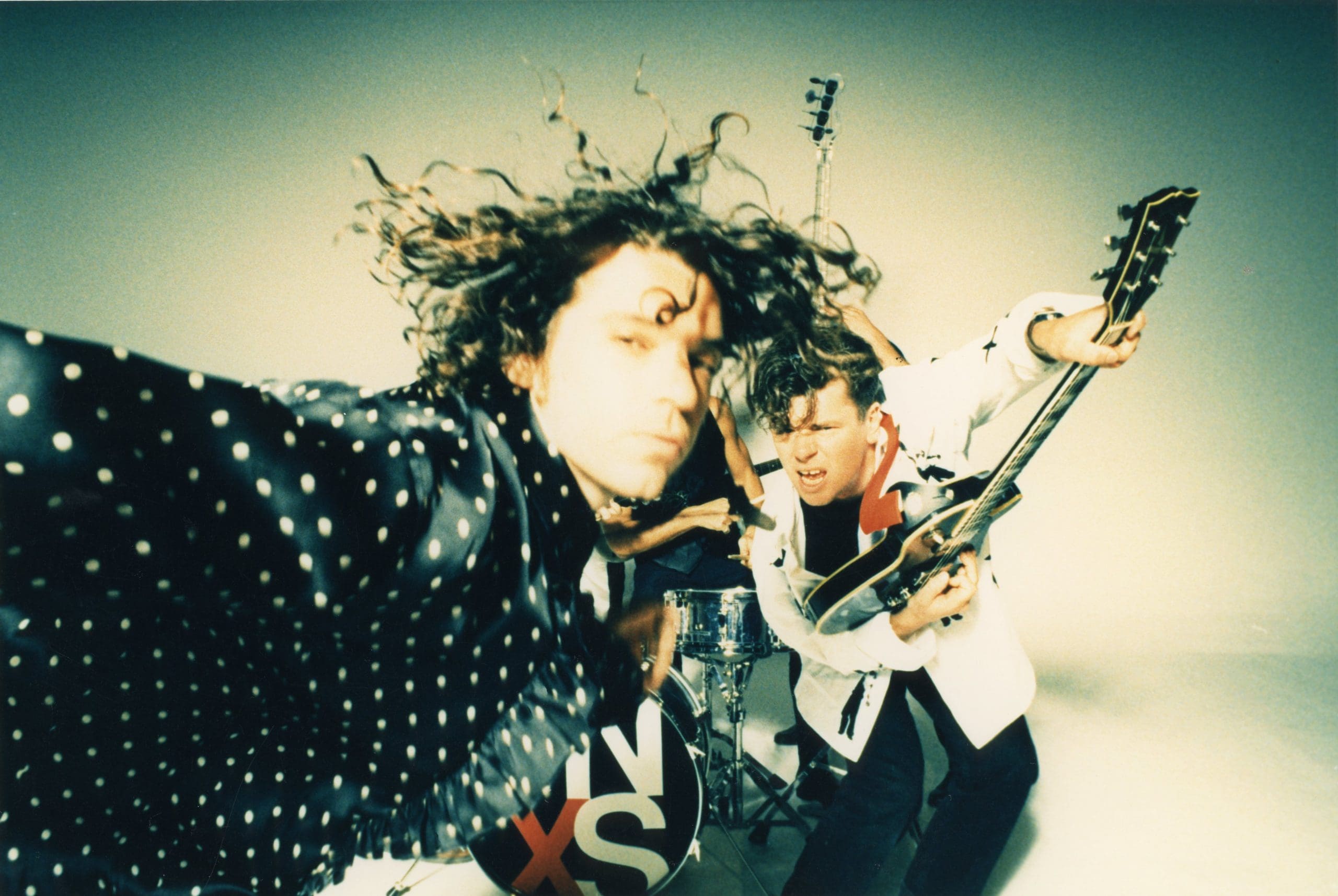
“Not one cent,” confirms Garry. Tim explains: “When Chris asked if we minded spending the money we’d make from Wembley on filming the show, we were like, ‘Ahh, it’s okay.’ We were doing that many shows, it really wasn’t a big deal – we weren’t playing Wembley for the money.” Garry explains: “We knew Wembley was going to be special, so filming was something we felt that we had to do. Not many bands get to the point where they can have a film like that, one which they can show their families for the rest of their lives. In hindsight, I’d like that Wembley money now! But filming that show was the right decision to make.”
INXS didn’t tour 1992’s Welcome To Wherever You Are, yet it’s the band’s favourite album. “We wanted to be The Beatles for a while, and Welcome… was our Sgt Pepper,” summarises Garry. “The world may have moved on, with grunge taking over, but we were still doing our thing and loving it.”
Time To Take Risks
1993’s Full Moon, Dirty Hearts marked the beginning of the fallout from Michael’s injuries sustained in Copenhagen. Upset at the change in Michael’s attitude, Chris Murphy resigned as manager. “It became hard with Michael towards the end,” he says, sadly. “We’d always been on the same page of taking creative risks but towards the end, we were completely at odds with each other. After Welcome To Wherever You Are, INXS needed a risky ‘Who cares?’ attitude. I told them, ‘Look, your sales are dropping. I don’t know how many more Wembley Stadiums there’ll be. You started out quirky, so disappear for six months, get your vibe, hang out. Then go in the studio and make a reggae album.’”
Chris’ rationale was that since INXS had been overtaken by bands copying them, they needed to return to their ska roots in order to win the critics back. It didn’t go down well. “We had a band meeting where Michael lost the plot a little,” Chris recalls. “He was going, ‘I don’t want to do a fucking reggae album!’, but what Michael wanted to make was a grunge record. Grunge was already gone by then and INXS had to be edgy again. I had to point out Pearl Jam and Nirvana were already edgy – and they weren’t being paid $1million, working out which red wine to drink in the studio.”
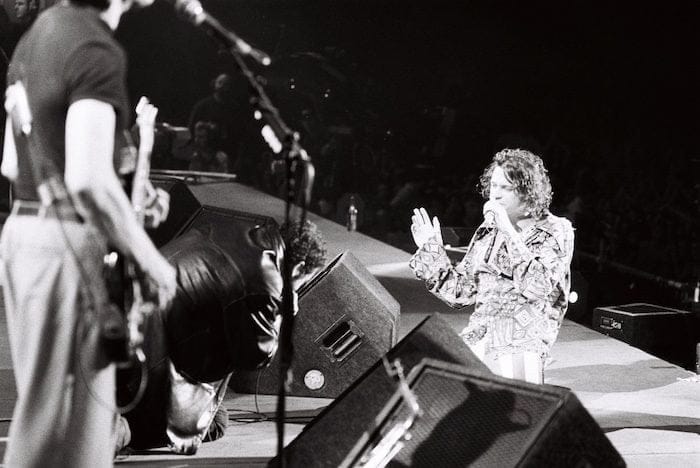 Garry defends the album but admits recording it was a nightmare, saying: “It was made in Capri, in a studio owned by the Mafia. Michael wasn’t feeling well and it was a frustrating time. Everything that could go wrong went wrong.”
Garry defends the album but admits recording it was a nightmare, saying: “It was made in Capri, in a studio owned by the Mafia. Michael wasn’t feeling well and it was a frustrating time. Everything that could go wrong went wrong.”
Having played Wembley Stadium three years earlier, the tour for Full Moon, Dirty Hearts saw INXS play clubs to get their hunger back. It worked artistically – INXS were magnificent at Brixton Academy in October 1994 – but the press mocked them for, as they saw it, a dramatic slump in popularity. “That was instructional,” notes Garry. “The press were ready to not like us anymore and it was, ‘Ha! They’ve gone from Wembley Stadium to a club in Detroit!’ The knives were out and we walked into them. But those club dates were great, as it took us back to what we really love doing.”
INXS’ final album with Michael was Elegantly Wasted in 1997. Producer Bruce Fairbairn’s methods, insisting the band record their parts separately, didn’t exactly help foster any return to togetherness. “I don’t listen to Elegantly Wasted much,” admits the usually buoyant Garry. “It’s hard to separate how little fun it was to make from the actual record.”
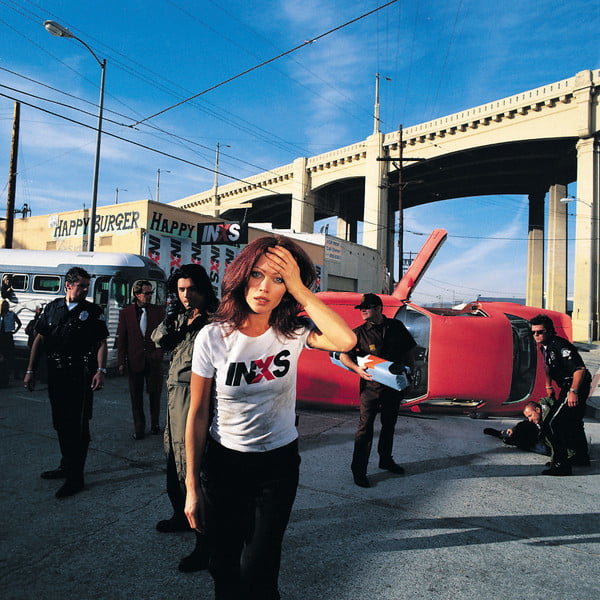 A Ghostly Presence
A Ghostly Presence
It’s not just Garry who still feels Michael Hutchence’s presence. Chris Murphy returned to managing INXS in 2008 and has overseen the fascinating soundtrack album to accompany Mystify. Adamant he didn’t want “yet another singles compilation”, he and associate Mark Edwards have compiled a bewitching musical biography of INXS’ singer, drawn largely from unreleased music. “Mark called me at 3am one night,” says Chris. “He said, ‘There’s ghosts everywhere! They’re flying around the fucking studio!’ Later, Mark told me that when he got stuck on the record, he’d get on his hands and knees on the floor of the studio and pray to God and Michael, saying, ‘They give me the right direction.’” Chris was understandably dubious, but later his own wife Carolyn also saw Michael’s ghost in their home while her husband was collating the soundtrack. “I was playing the soundtrack over and over, making sure it was as good as I thought it was, when my wife said ‘Darling, you know Michael is here with me in the room? He’s sitting over there in the chair. It’s a beautiful thing, because he left this earth in terrible, lonely circumstances and here he is, listening to his music again.’ That’s when I thought this project was going to do me in. But then I realised, maybe Michael is with us on this one. Maybe we’ve released him from the terrible hole he’s been in for 22 years.”
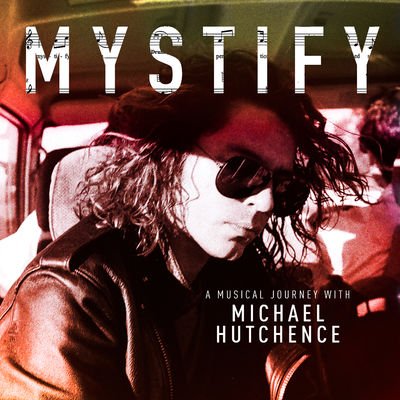 INXS last played together without Michael in 2012. Legal reasons mean Tim can’t talk about a boating accident in 2015, which resulted in him severing a finger, but Garry says: “If Tim wasn’t injured, I’m sure INXS would still play together in some form. And I’ve no doubt if Michael had lived, he’d still be with INXS. Maybe not playing all the time, but we’d be doing shows, making records and disappearing again. Michael was always working with cutting-edge people and he wouldn’t want to be part of a hoary old band. If he was still around, Michael would be doing quality music – and he’d be having fun with it.”
INXS last played together without Michael in 2012. Legal reasons mean Tim can’t talk about a boating accident in 2015, which resulted in him severing a finger, but Garry says: “If Tim wasn’t injured, I’m sure INXS would still play together in some form. And I’ve no doubt if Michael had lived, he’d still be with INXS. Maybe not playing all the time, but we’d be doing shows, making records and disappearing again. Michael was always working with cutting-edge people and he wouldn’t want to be part of a hoary old band. If he was still around, Michael would be doing quality music – and he’d be having fun with it.”
Among the lingering sadness of his passing, Mystify shows how much fun Michael had. Live Baby Live is a perfect reminder of how there was nobody better at making stadiums intimate. After 22 years, it’s time to remember how much of a kick INXS were all over again.
John Earls and Steve Harnell
Click here to read more Classic Pop interviews


